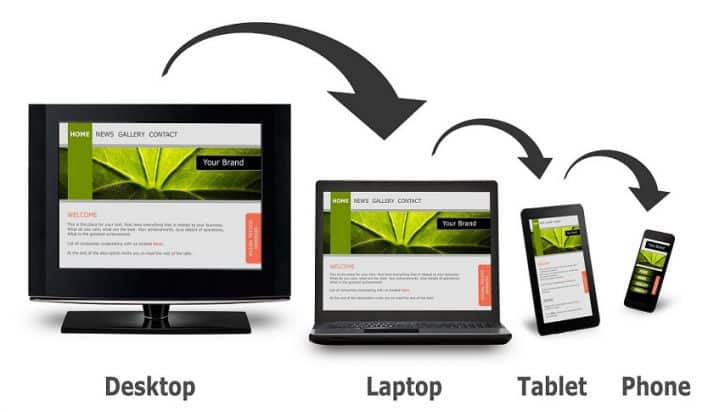The Birth of the Web: A Timeline of Digital Evolution
Introduction
The introduction of the World Wide Web (WWW) was a watershed moment in human history, as it brought about a revolution in communication, business, and the dissemination of knowledge on a global scale. It is a remarkable story of creativity, teamwork, and technological improvement that has existed from the time it was first conceived until it reached its current state. We are going to embark on a voyage through time in this essay, and we are going to investigate the significant milestones that have shaped the development of the web. The Birth of the Web: A Timeline of Digital Evolution
The Early Days: 1960s – 1980s
1960s: The Dawn of the Internet
ARPANET, a project that was supported by the United States Department of Defense, was established in the 1960s, marking the beginning of the history of the World Wide Web. By enabling many computers to connect with one another over a decentralized network, the Advanced Research Projects Agency Network (ARPANET) established the framework for what would then become the Internet.
1970s: Protocols and Standards
Over the course of the 1970s, significant protocols such as TCP/IP (Transmission Control Protocol/Internet Protocol) were developed, which ultimately led to the establishment of the current Internet. Because of these protocols, the manner in which data was transported between computers was standardized, which made it possible to communicate without interruption across a variety of networks.
1980s: The Birth of the Web
During the 1980s, British computer scientist Tim Berners-Lee thought up the idea that would later become known as the World Wide Web. The basis for the web as we know it today was laid by Berners-Lee in 1989 when he proposed a system that would allow for the sharing and accessibility of information through the use of hypertext systems.

The Web Goes Public: 1990s
1991: The First Website
On August 6, 1991, Tim Berners-Lee created the very first website in the history of the globe. This website offered information regarding the globe Wide Web project to the general public. This marked the beginning of the web’s availability to the general public and laid the groundwork for its rapid spread around the world.
1993: The Browser Wars
Mosaic and Netscape Navigator were two examples of web browsers that came into existence in the early 1990s. These browsers made it simpler for users to access the entirety of the internet. Additionally, during this time period, the famed “Browser Wars” took place between Microsoft’s Internet Explorer and Netscape, as both companies competed for the position of market leader in the browser industry.
1995: The Rise of E-Commerce
In the middle of the 1990s, the introduction of online marketplaces such as Amazon and eBay marked the beginning of the emergence of e-commerce, which fundamentally altered the manner in which goods and services were purchased and sold. The commercialization of the internet and the establishment of the foundation for the digital economy both occurred during this time period.
The Dot-Com Boom and Bust: Late 1990s – Early 2000s
1999: The Dot-Com Bubble
It was during the latter part of the 1990s that there was a period of intense investment in internet businesses, which ultimately resulted in the infamous dot-com bubble. However, as the bubble burst in the early 2000s, the stock values of companies that had little to no profits skyrocketed to heights that had never been seen before, only to plummet back down to their previous levels.
2000: The Rise of Social Media
During the time that the dot-com bubble was bursting, social media platforms such as Friendster and MySpace were gaining popularity, which marked the beginning of the change that would be brought about by social networking. By connecting people in ways that were previously impossible, these platforms reshaped the way in which we communicate and interact with one another online.
2001: The Birth of Wikipedia
Wikipedia was first introduced to the world in January of 2001, marking the beginning of a new era of collaborative knowledge exchange. Access to information was democratized through the usage of Wikipedia, which became one of the most frequented websites on the internet. This was accomplished by enabling people to collaborate on the creation and editing of articles.
The Web 2.0 Era: Mid-2000s
2004: The Rise of Web 2.0
The term “Web 2.0” was first coined by Tim O’Reilly in 2004, and it was used to represent a change in the way that people used and viewed the internet. Web 2.0 promoted dynamic, user-generated content as an alternative to static web sites, which helped to cultivate a culture of cooperation and involvement.
2006: The Emergence of Web Apps
Google Docs and Gmail are two examples of web applications that came into existence in the middle of the 2000s. These applications offered functionality that was previously only accessible through desktop software. This marked a dramatic shift toward cloud computing and led to the spread of web-based products and services. It also cleared the way for the cloud computing revolution. https://diversewebsitedesign.com.au/website-designer/-drouin/
2007: The Era of Mobile
In 2007, Apple introduced the iPhone, which marked the beginning of the mobile revolution. This introduced the full capability of the web to portable devices, which was a significant step forward. The proliferation of mobile internet usage compelled developers to place a higher priority on responsive design and interfaces that are friendly to mobile devices.
The Mobile-First World: 2010s
2010: The Rise of Responsive Design
As the number of people using mobile devices continued to rise, web developers started implementing concepts of responsive design in order to guarantee that their websites appeared and functioned properly across all devices. Consequently, this signified a significant shift in the paradigm of web design, which placed an emphasis on the user experience above everything else.
2012: The Dominance of Social Media
The social media platforms had already established themselves as the preeminent power on the internet by the beginning of the 2010s. The ways in which we connect with one another, take in news, and interact with one another have been influenced by social media platforms such as Facebook, Twitter, and Instagram, which have become indispensable components of the lives of billions of people.
2015: The Advent of Progressive Web Apps
It was in 2015 when Google first presented the idea of Progressive Web Apps (PWAs), which blurred the barriers between webpages and native applications. The functionality of traditional apps is combined with the reach and accessibility of the web in progressive web apps (PWAs), which results in a user experience that is consistent across all devices. The Birth of the Web: A Timeline of Digital Evolution
The Future of the Web: Beyond 2020
Artificial Intelligence and Machine Learning
The future of the web is going to be significantly influenced by artificial intelligence (AI) and machine learning, which are both expected to play an increasingly major role in the future. The ways in which we interact with and experience the web will continue to be improved by technology powered by artificial intelligence (AI), which will include tailored recommendations and intelligent chatbots.
Augmented Reality and Virtual Reality
Virtual reality (VR) and augmented reality (AR) are also on the verge of bringing about a transformation in the web by providing experiences that are more immersive and interactive than those that can be achieved via the use of regular web browsers. We can anticipate the emergence of new forms of storytelling, entertainment, and commerce on the web as these technologies become more accessible to the general public.

Privacy and Security
When it comes to the future of the web, protecting user data will be of the utmost importance, especially in this day and age of increased concerns around privacy and security. The proliferation of technologies such as blockchain and decentralized networks may result in the development of novel strategies for safeguarding the privacy of users and assuring the safety of financial transactions conducted online.
Conclusion
The World Wide Web has come a long way in a relatively short amount of time, from its humble beginnings as a research project to its current status as a ubiquitous worldwide platform. Today, the World Wide Web is a platform that is used all over the world. When we consider the future, we see that the development of the web is not showing any indications of slowing down, which indicates that it will continue to undergo transformation and innovation in the years to come. The web will continue to develop, adapt, and shape the way in which we engage with one another and the world around us. This will occur whether it is through experiences powered by artificial intelligence (AI), immersive virtual environments, or increased information privacy protections.





